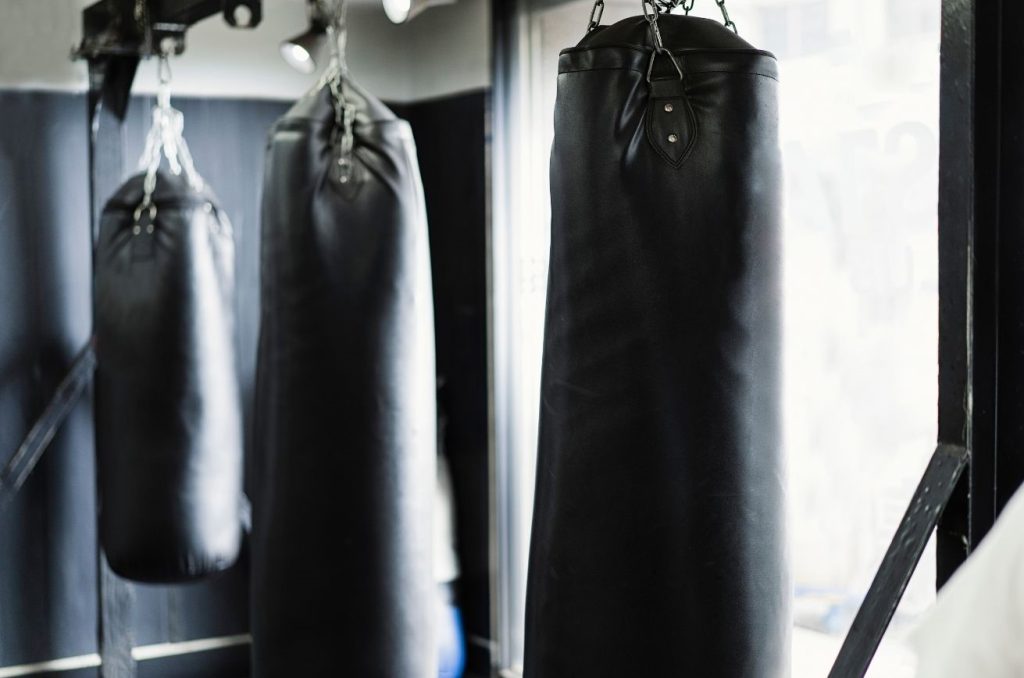As a dedicated boxing gym owner or promoter, you understand the inherent risks involved in this physically demanding sport. From high intensity training equipment to specialised facilities, your boxing gym serves as a sanctuary for fighters and enthusiasts alike.
However, unforeseen events such as accidents, natural disasters, or theft can halt your investment and disrupt the smooth functioning of your establishment. This is where boxing gym insurance steps in to protect your property and equipment, ensuring that you can continue to provide a safe and professional environment for all.
In this article, we will explore the vital aspects of boxing gym insurance, including coverage options, key considerations, and the benefits it offers to boxing gym owners and promoters. Whether you’re just starting out or have an established facility, understanding boxing gym insurance is essential for safeguarding your assets and securing your future success.


Understanding Property and Equipment Insurance
Property and equipment insurance provides coverage for the physical assets of your gym, while gym liability insurance protects you from potential lawsuits and claims arising from bodily injury or property damage that occur on your premises.
Property Damage
Property damage coverage safeguards against financial losses resulting from damage to your gym facility caused by fire, water leaks, or other unforeseen events. It can cover repair or replacement costs for damaged property.
Theft
Gym equipment, such as weights, punching bags, and training gear, can be expensive to replace. Theft coverage ensures that you are protected in case of equipment theft, helping you recover financially.
Natural Disasters
Boxing gyms are susceptible to natural disasters like floods, storms, or earthquakes. Property and equipment insurance can include coverage for these events, allowing you to rebuild and replace damaged property. This coverage extends to gym liability insurance, which protects you from potential lawsuits arising from injuries or property damage caused by natural disasters.
Importance of Tailored Coverage for Combat Sports Businesses
Tailored coverage that includes property and equipment insurance, as well as gym liability insurance, is crucial for combat sports businesses like boxing gyms. These specialised policies address the unique risks associated with combat sports, including injuries during training sessions or fights. By customising your coverage, you can protect yourself against potential liabilities and ensure your financial stability.
Factors Influencing Insurance Premiums: Location, Gym Size, Equipment Value
Several factors influence insurance premiums for boxing gyms, encompassing both property and equipment insurance and gym liability insurance. These factors include:
Location
The geographic location of your gym impacts insurance premiums. Areas prone to natural disasters or high crime rates may result in higher premiums for both property and liability coverage.
Gym Size
The size of your gym facility, including the number of training areas and square footage, can influence insurance premiums. Larger facilities may require higher coverage limits, affecting the overall cost.
Equipment Value
The value of your gym equipment is another important factor. Expensive training equipment and specialised machinery may result in higher insurance premiums. Accurately assessing the value of your equipment ensures appropriate coverage and helps prevent underinsurance for both property and liability aspects.
By working with experienced insurance brokers who understand the unique risks associated with combat sports, you can customise your coverage to suit your specific needs and gain peace of mind knowing that your gym, equipment, and legal liabilities are well protected.
Risks Faced by Gym Owners and Promoters
Running a gym, especially in the world of combat sports like MMA, entails various risks that gym owners and promoters must be aware of to protect their investments. MMA gym insurance plays a crucial role in mitigating these risks and ensuring the long term success of the business.
Property related Risks: Fire, Water Damage, Structural Issues
- A fire can quickly devastate a gym, causing extensive damage to the building, equipment, and other valuable assets.
- Leaks, floods, or plumbing issues can lead to water damage, potentially ruining gym facilities and equipment.
- Ageing buildings or structural defects can pose risks to the safety and integrity of the gym, requiring costly repairs or renovations.
Equipment related Risks: Theft, Damage, Wear and Tear
The equipment within an MMA gym is a substantial investment and is subject to risks such as:
- Expensive training equipment, including weights, mats, and specialised machinery, can be targeted by thieves, leading to financial losses for gym owners.
- Accidental damage during training sessions or events can occur, requiring costly repairs or replacements.
- Regular use of equipment in a high intensity environment can result in wear and tear, necessitating maintenance or replacement over time.
Liability Risks: Injuries to Clients, Third party Claims, Lawsuits
Liability risks are a significant concern for gym owners and promoters, and MMA gym insurance addresses these issues. Such risks include:
- Accidents happen during training or competitions, leading to injuries to clients or participants, which may result in liability claims.
- Visitors or spectators at the gym may sustain injuries or property damage, leading to potential liability claims against the gym owner or promoter.
- Legal action, including negligence claims, can be brought against the gym in the event of injuries or damages, which can be financially burdensome without appropriate insurance coverage.
If you are starting your MMA Gym consider these tips.
Financial Risks: Loss of Revenue, Business Interruption
Gym owners and promoters face financial risks that can impact their revenue and operations, including:
- Unexpected events, such as property damage or lawsuits, can lead to temporary or prolonged closures, resulting in a loss of revenue for the gym.
- Natural disasters, fire incidents, or legal disputes can disrupt normal operations, causing business interruption and financial strain.


Key Considerations in Choosing Insurance Coverage
When selecting insurance coverage for your gym, especially gym public liability insurance, there are several important factors to ensure comprehensive protection tailored to your specific needs and risks.
Assessing the Value of Gym Property and Equipment
This includes conducting a thorough inventory and evaluation of all assets to determine their replacement costs. Knowing the value of your property and equipment enables you to select coverage limits that adequately protect your investment in the event of damage, theft, or loss.
Evaluating the Business’s Unique Risks and Needs
Consider the specific activities, training methods, and services offered by your gym, as well as the types of clients you cater to. For example, if your gym specialises in high intensity training or hosts competitive events, you may require additional coverage for participant injuries or professional liability. By assessing your business’s unique risks, you can select insurance coverage that addresses those specific areas of concern.
Reviewing Policy Limits, Deductibles, and Exclusions
Carefully review the policy limits, deductibles, and exclusions of the insurance coverage you are considering. Policy limits should align with the estimated value of your property and equipment, ensuring that you are adequately covered in the event of a claim.
Deductibles should be set at a level that is manageable for your business’s finances. Additionally, pay close attention to policy exclusions, which outline circumstances or events that are not covered. Understanding these aspects will help you make an informed decision and avoid any surprises during the claims process.
Understanding the Claims Process and the Insurer’s Reputation
It is essential to have a clear understanding of the claims process and the reputation of the insurance provider before finalising your coverage. Familiarise yourself with the steps involved in filing a claim and the insurer’s responsiveness and efficiency in handling claims.
Additionally, research the insurer’s reputation in the industry by reviewing customer feedback, ratings, and reviews. Choosing an insurer with a strong track record and positive reputation can provide you with confidence and peace of mind.
By considering these key factors in choosing insurance coverage, including gym public liability insurance, you can make informed decisions that align with your gym’s unique needs and risks.


Types of Coverage for Gym Owners and Promoters
Gym owners and promoters have specific insurance needs to protect their businesses from various risks. Understanding the different types of coverage available is essential to ensure comprehensive protection.
Property Insurance: Covering Buildings, Contents, Improvements, and Equipment
Property insurance provides coverage for the physical assets of your gym, including the building, contents, improvements, and equipment. This coverage protects against risks such as fire, water damage, vandalism, and theft. It ensures that the property and equipment necessary for the gym’s operations can be repaired or replaced in the event of damage or loss.
Equipment Breakdown Insurance: Protection against Mechanical Failures
Equipment breakdown insurance specifically focuses on mechanical failures of your gym equipment. It covers the costs of repairs or replacements due to electrical or mechanical breakdowns. This coverage is crucial for gyms that heavily rely on specialised machinery and training equipment, providing financial protection against unexpected failures that can disrupt operations.
Business Interruption Insurance: Compensation for Lost Income during Disruptions
Business interruption insurance safeguards against the financial impact of disruptions that cause a temporary closure or hinder business operations. It provides compensation for lost income during the downtime, allowing gym owners and promoters to cover ongoing expenses, such as rent, salaries, and utilities. This coverage is particularly valuable in situations where the gym is forced to close due to property damage, natural disasters, or other unforeseen events.
Liability Insurance: Coverage for Injuries to Clients and Third Party Property Damage
Liability insurance is crucial for gym owners and promoters as it protects against potential lawsuits and claims arising from injuries to clients and third party property damage. Gym liability insurance, including public liability coverage, provides financial protection in the event of accidents, ensuring that legal costs, medical expenses, and potential settlements or judgments are covered.
To learn more about business insurance for boxing gym, read our comprehensive blog here.
By considering these types of coverage, gym owners and promoters can ensure comprehensive protection for their businesses. Customising insurance policies to address specific risks and needs is essential in safeguarding investments, minimising financial losses, and maintaining the long term success of gyms in the dynamic and challenging industry.
In conclusion, having the right insurance coverage is crucial for gym owners and promoters, especially in the world of combat sports.
When choosing insurance coverage, it’s important to assess the value of gym property and equipment, evaluate the business’s unique risks and needs, review policy limits and exclusions, and understand the claims process and the insurer’s reputation.
Don’t wait until it’s too late; take action now and protect your gym with the right insurance coverage. Contact our team today for personalised guidance and to find the best insurance solution for your gym’s specific needs.
Note: The material offered here is for informational purposes only. It does not constitute legally binding advice and should not be a substitute for a consultation with an insurance expert.

